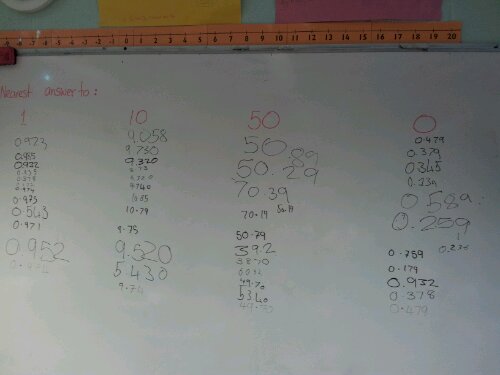Here’s a mini-investigation on ordering decimals, suitable for Year 6/7 (maybe even Y5 too)!
Equipment
Exercise book (or equivalent)
Pen/pencil
Felt tip pen
Sheet of paper: A4 or A5
Scissors
Activity
1. Fold the paper into 8 and cut along the fold lines. This will give you some spares, just in case.
2. Clearly write 0 and a decimal point onto two pieces with felt tip pen.
3. Choose two different digits and write them down – you now have four activity cards.
4a. What is the biggest number you can make? Arrange it on the desk. (The decimal point can’t be at the end of the number)
4b. Discuss what you notice about the digits and size.
5a. What is the smallest number you can make? Arrange it on the desk (The decimal point can’t be at the start of the number).
5b. Discuss what you notice.
6. What other numbers can you make? There are 12 possible ways to arrange the four cards (according to my class). Encourage the class to be logical and record their answers carefully.
7. Arrange the numbers in order from smallest to biggest.
Activity 2
Add another digit and investigate. My class insist there are 52 possible numbers – I’m waiting for a reasoned justification of this.
What happens if you duplicate a digit?
Follow-up Activity
After completing either activity, ask the class to find the numbers in their lists which are closest to 0, 1, 10 & 50. This helps consolidate their understanding of place value. I asked my class to write their answers on the board. We then discussed the accuracy of their answers.

